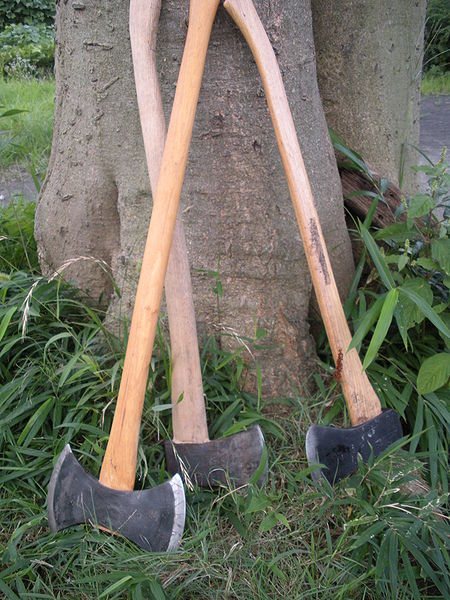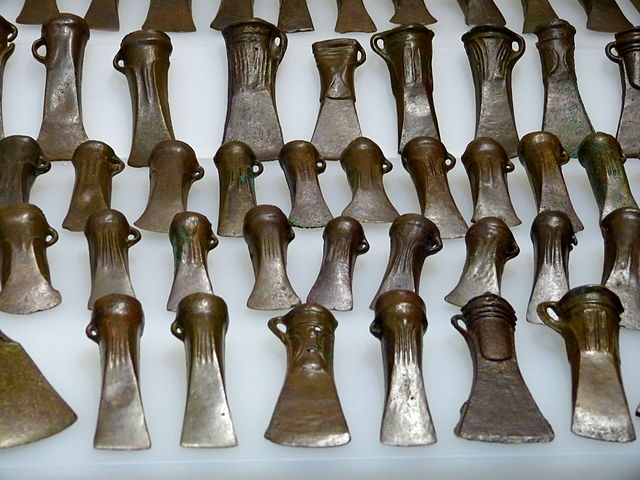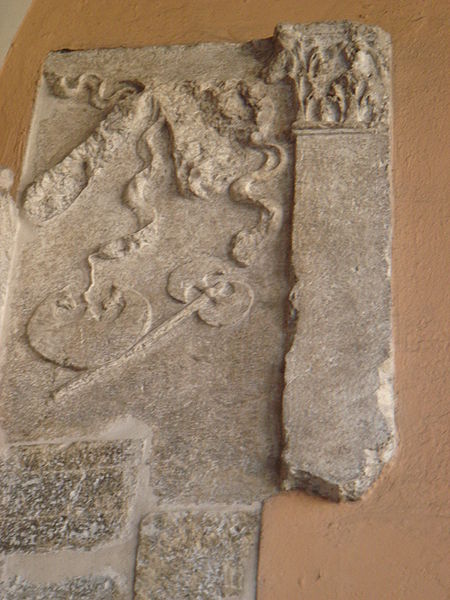An adze or adz is an ancient and versatile cutting tool similar to an axe but with the cutting edge perpendicular to the handle rather than parallel. Adzes have been used since the Stone Age. They are used for smoothing or carving wood in hand woodworking, and as a hoe for agriculture and horticulture. Two basic forms of an adze are the hand adze —a short-handled tool swung with one hand—and the foot adze (hoe)—a long-handled tool capable of powerful swings using both hands, the cutting edge usually striking at foot or shin level. A similar tool is called a mattock, which differs by having two blades, one perpendicular to the handle and one parallel.
Native Alaskan boat builder using an adze
Contemporary stone adzes from New Guinea
19th century knowledge woodworking adze and axe
Micronesian of Tobi, Palau, making a paddle for his wa with an adze
An axe is an implement that has been used for millennia to shape, split, and cut wood, to harvest timber, as a weapon, and as a ceremonial or heraldic symbol. The axe has many forms and specialised uses but generally consists of an axe head with a handle, also called a haft or a helve.
Double- and single-bit felling axes.
A collection of bronze socketed axe blades from the Bronze Age found in Germany. This was the prime tool of the period, and also seems to have been used as a store of value.
Bronze socketed axe from the Heppeneert hoard (Belgium), about 800 BCE, collection of the King Baudouin Foundation, Gallo-Roman Museum (Tongeren)
Roman axes in an ancient Roman relief in Brescia, Italy








